The History of Silk
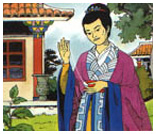
According to Confucius, it was in 2640 B.C. that the Chinese princess Xi Ling Shi was the first to reel a cocoon of silk which, legend also has it, had dropped into her cup of tea. From that historic moment, the Chinese discovered the life cycle of the silk worm and for the next 3000 years were to keep their monopoly of silk.
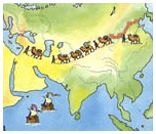
In the 3rd Century B.C., Chinese silk fabrics were beginning to find their way throughout the whole of Asia, and were transported overland to the west, and by sea to Japan, in those long itineraries known as the silk roads. It was in Asia that the Romans discovered these wondrous fabrics but they knew nothing of their origin.

In 552 A.D., the Emperor Justinian sent two monks on a mission to Asia, and they came back to Byzantium with silkworm eggs hidden inside their bamboo walking sticks. (The earliest known example of industrial espionage!). From then on, sericulture spread throughout Asia Minor and Greece.
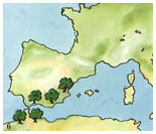
In the 7th Century, the Arabs conquered the Persians, capturing their magnificent silks in the process, and helped to spread sericulture and silk weaving as they swept victoriously through Africa, Sicily and Spain. In the 10th Century, Andalusia was Europe's main silk-producing centre.

Then the Crusaders, the formation of the Mongol Empire, Marco Polo's journeys in China led to the development of commercial exchanges between East and West, and to an ever-increasing use of silk. In this way, Italy started a silk industry as early as the 12th Century.
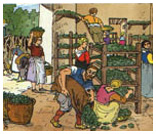
In the period 1450-1466, Lyon became a major warehouse for foreign silks, but these imports caused a harmful outflow of capital, and in 1466 Louis XI declared his intention to "introduce the art and craft of making gold and silk fabrics in our city of Lyon".
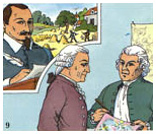
Later, in 1536, François I gave Lyon the monopoly of silk imports and trade, thus effectively creating the Lyon silk industry.
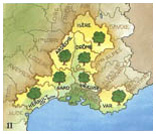
The next significant event in the development of the silk industry was the Revocation of the Edict of Nantes in 1685. The French Huguenots, again subject to religious persecution, fled the country in large numbers. Many Huguenots were expert throwsters and weavers, and they contributed in a very large degree to the development of the silk industry in Germany, Great Britain, Italy and Switzerland.
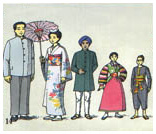
Throughout the 18th Century, silk continued to prosper in Europe, Japan and above all in China. European missionaries to China reported that "even the simplest soldiers are dressed in silk".

In 1804, Jacquard perfected the method of producing figured fabrics, by the use of perforated cards. This was a revolution in weaving techniques and gave a tremendous impetus to the creating of silk industry in Lyon and then in other European countries.

The 19th Century is characterised by two contradictory trends: increased mechanisation and the consequent increase in productivity in the silk industry, on the one hand, and on the other, the beginning of the decline of European sericulture in the last quarter of the century. From 1872, and the opening of the Suez Canal, raw silk imported from Japan became more competitive, thanks also to Japan's progress in reeling techniques. The rapid industrialisation of European silk-producing countries, notably France, led to transfer of agricultural labour to the cities and towns. Diseases that affected the silkworm, although overcome by Pasteur, made silk-rearing a less reliable source of income. And the first man-made fibres were beginning to make inroads into the markets traditionally reserved for silk.
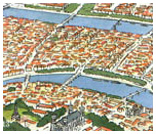
The early part of the 20th Century, whereas European sericulture continued its slow decline, the silk industry succeeded in maintaining a strong position through its technical innovations and the development of silk blended with other fibres.
The next major turning point was to be the Second World War. Raw-silk supplies from Japan were cut off, and the new synthetic fibres captured many of silk's markets, such as stockings and parachutes. This interruption in silk activity in Europe and the United States sounded the death-knell of European sericulture.
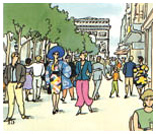
After the war, Japan restored her silk production, with vastly improved reeling, inspection and classification of her raw silk. Japan was to remain the world's biggest producer of raw silk, and practically the only major exporter of raw silk, until the 1970's. Then China, thanks to a remarkable effort of organisation and planning, gradually re-captured her historic position as the world's biggest producer and exporter of raw silk. In 1985, world production of raw silk was about 56000 tonnes (the same as in 1938) of which over 50% were produced in China.
The other major producers are Japan, India, the USSR, the Republic of Korea and Brazil. Silk is still produced in smaller quantities in many other countries, and several developing countries are studying new sericultural projects.
